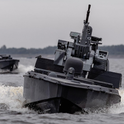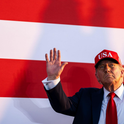North Korea conducted its sixth nuclear test on Saturday, the largest ever by the dynastic regime by some order of magnitude. The country has claimed that it was a successful test of a thermonuclear weapon, or hydrogen bomb, a type of weapon more advanced than those used in previous tests. Although verifying the exact nature of the device is difficult outside of North Korea, the size of explosion certainly marks advancements in the regime’s capabilities.
This specific development is not completely out of the blue and alone does not increase the likelihood of war. Yet the US administration’s mismanagement of the crisis does drive the level of anxiety over North Korea’s nuclear tests upward.
North Korea has been steadily developing its nuclear and missile programmes for many years. But this year has seen an acceleration: the country’s first tests of an intercontinental ballistic missile (ICBM), the development of new solid-fuel missile engines, and the testing of new intermediate range capabilities. All make North Korea’s nuclear capability more credible. The ability to produce a thermonuclear weapon follows this trajectory.
Yet advancements in capability do not equate to imminent use. The North Korean nuclear and missile programme is driven by the security concern that other countries, primarily the US, want to topple the regime that Kim Jong-un is trying to preserve. It is designed to establish a deterrent against this threat, a signal that Pyongyang can protect its interests.
It is not North Korea’s intention to launch a bolt-from-the-blue attack. This would lead to an overwhelming US military response that would see the end of the Kim regime, the exact outcome Pyongyang is trying to avoid.
"The rhetoric from the White House has been deeply irresponsible"But concern regarding conventional military escalation is increasing. The current US administration appears to be considering the option of military force as a response to North Korean nuclear and missile tests—and has not sincerely attempted to diffuse tensions. In fact, often it seems to do the opposite.
The rhetoric from the White House has been deeply irresponsible. Following the test of an ICBM, Trump tweeted that any threat to the US or its allies will be met with “fire and fury,” and that the US nuclear arsenal is “locked and loaded” for use.
This has been counter-balanced sporadically with more tempered comments that Washington is ready to talk to Pyongyang to de-escalate the situation, acknowledging that the military option is not attractive. But these inconsistent, and sometimes incoherent, messages merely reflect the lack a decisive US policy on the issue.
Raising the possibility of military force without also offering a viable way out for North Korea is not advisable. With military threats—and no clear message to deter Pyongyang—the US administration seriously risks tensions escalating to the point that conventional war breaks out, as any conventional strike against North Korea would almost certainly be met with conventional retaliation.
Military threats are a key component of establishing deterrence and can be a useful tool when used appropriately. But the current messaging from Trump’s administration is not seen as credible and so emboldens North Korea. The frequent threat of military retaliation has not yet been realised, leaving Pyongyang to assess that it can keep pushing provocations with very little repercussion. This lessens the possibility of a more stable deterrent relationship and grants North Korea the space to make riskier moves, like testing missiles over other nations. These in turn could increase the prospect of a US military strike.
North Korea is unlikely to stop these tests any time soon unless it is offered adequate concessions. In previous rounds of negotiations food aid and energy provisions have coaxed Pyongyang to the table. But this is unlikely to work now. More realistic concessions could include a cap on or downgrading of the joint US-South Korea military exercises that Pyongyang sees as threatening, in exchange for a freeze of nuclear and missile tests. But for the US, this risk reduction measure does not seem to be an option.
The immediate-term approach to North Korea must be clear communications from the US administration that support the establishment of a stable deterrence relationship and create space for diplomatic engagement at the same time. Without this, the consequences could be grave indeed.












